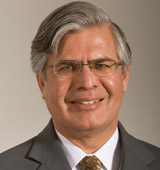their income on
food, clothing and fuel alone – that
does not leave much room for
discretionary spending.
Why sudden interest in BOP
markets? Is it another fad or is this
the new big marketing opportunity?
There is no big marketing
opportunity at the BOP. The BOP
proposition is a fad that will fade
away when more companies realize
that it does not work. The growth
rates in rich countries have slowed
down and firms are seeking growth
opportunities in emerging
economies. The BOP proposition
mistakenly lumps together all people
in emerging economies as poor. The
real marketing opportunity is the
rapidly growing middle class in
countries such as China and India.
In one of your often-quoted papers
on the subject ("Misfortune at the
Bottom of the Pyramid"), you have
argued that BOP proposition is, at
best, a harmless illusion and
potentially a dangerous delusion.
BOP argument is, you have observed,
riddled with inaccuracies and
fallacies. Can you please elaborate on
this line of thinking? Why should
BOP proposition a mirage?
The BOP proposition argues that
there is much untapped purchasing
power at the BOP. In his popular
book Fortune at the Bottom of the
Pyramid, CK Prahalad asserts that the
BOP market is $13 tn in size. This is a
gross exaggeration. I estimate the BOP
market to be about $0.3 tn from the
perspective of an MNC.
Not only is the BOP market quite
small, it is unlikely to be very
profitable, especially for a large
company. The costs of serving the
markets at the bottom of the pyramid
can be very high. Poor people are, of
course, price sensitive. Companies
following the BOP proposition often
fail because they overestimate the
purchasing power of poor people and
set prices too high. Virtually none of
the examples cited by BOP
proponents support the
recommendation that companies can
make a fortune by selling to the poor.
Several of the examples that
apparently support the BOP
proposition involve companies that
are profitable by selling to people well
above the $2/day poverty line,
although even these consumers seem
poor to a Western researcher.
What alternative perspective do
you offer as regards private sector
participating in alleviating poverty?
I argue for the need to view the poor
primarily as producers, not as
consumers. By far the best way to
alleviate poverty is to raise the income
of the poor, and to emphasize buying
from the poor rather than selling to
the poor. Creating opportunities for
steady employment at reasonable
wages is the best way to eradicate
poverty. There is much empirical
evidence showing that creating
decent employment opportunities is
the best way to take people out of
poverty. In addition, there is a strong
link between productivity and decent
work. Companies can focus on
growth in labor intensive industries,
and increase labor productivity by
achieving scale economies and
upgrading the skills of employees.
Which companies—MNCs or local
companies—are better equipped to
serve the BOP markets and why?
To the extent that there are
opportunities to sell to the poor, it is
usually small to medium sized local
enterprises that are best suited to
exploiting these opportunities.
Markets for selling to the poor usually
do not involve significant economies
of scale.
Through their decades of on-theground
experience in poor countries,
MNCs have probably already realized
that there is no fortune at the bottom
of the pyramid, or that they have no
competitive advantage here, and thus
have avoided major investments in
this illusory market. This may be a
good thing, since MNCs might
otherwise inhibit the emergence of
local private entrepreneurs who
provide economic as well as noneconomic
benefits to society (e.g. as
community leaders).
